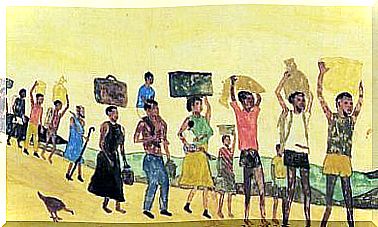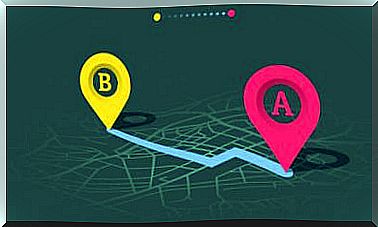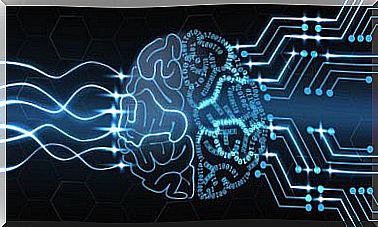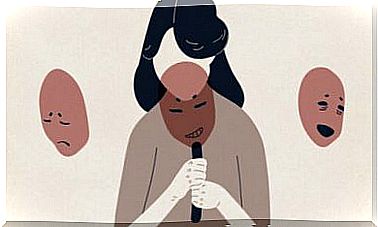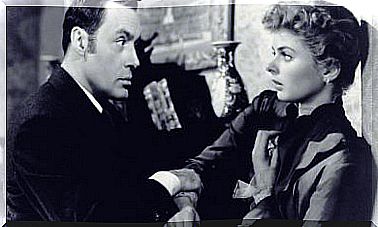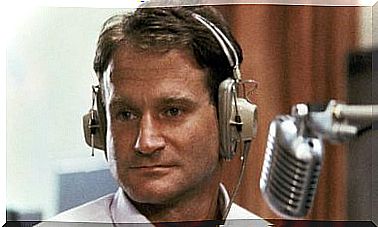Cold-hot Empathy Gap, A Curious Emotional Bias

People tend to underestimate how our emotional states impact us and how they filter our perception of things. An example of this phenomenon is found in the so-called “hot-cold empathy gap.” This bias shows us why, sometimes, we get to interpret certain facts completely wrong by not taking into account many of these internal states.
Possibly, one of the things that we most often ignore about ourselves is how the most primal and visceral impulses continue to determine us. This is common because if there is something we need, it is to perceive ourselves as balanced and rational beings, figures of lucid behavioral delicacy capable of dominating every reaction in almost any situation and circumstance.
However, just as an example, when we are hungry, a bad mood surfaces and, almost without realizing it, we end up having an argument with someone. We are also those people who come to judge others based on their own state of mind. If I am happy and in love, surely I see my reality from a more optimistic perspective. If I feel concerned, it is possible that I see in the other defects or nuances that I distrust.
The human being is a creature made of flesh, bones and a fabulous brain in which multiple cognitive biases are embedded. And many of them are mediated by that unknown emotional world. Let’s learn more about this interesting topic.

Cold-hot empathy gap, what does it consist of?
The hot-cold empathy gap was coined by Carnegie Mellon University psychologist and professor George Loewenstein. This term refers to a behavior that we see frequently and that, as expected, we ourselves experience on more than one occasion.
Something that seeks to make us understand this concept is that all of us tend to underestimate how emotions and, above all, visceral impulses determine us. However, it is possible that this last concept is not clear to us and it is necessary to delve into it. When we speak of a “visceral impulse” we are referring to those experiences in which our emotions are more intense, vehement and impulsive.
Anger, desire, passion, anger, hatred, fear … All those psychophysical realities are there, in our body, in our mind, guiding behaviors and motivating them in many ways. But, indeed, we do not always connect with them or understand them, and even less do we know how to control them.
Thus, what happens on average is that we develop a cognitive bias, that is, we tell ourselves that everything is under control, that everything we do, say or think is mediated by a calm and well-regulated mind. When, in reality, this is not always the case. Not in all cases.
Examples of our empathy gaps
George Loewenstein defined this empathy bias as a “hot-cold” gap for something very specific. When we are in a relaxed emotional state (cold) we have a hard time imagining how we can act in more intense (hot) situations. The same thing happens in reverse. To understand it better we will put some examples.
- When we are stressed or going through times of anxiety, we overestimate our behaviors. We think that we respond to the environment in a (cold) focused way, when this is not always the case.
- Likewise, when we admire someone, when we love them (our partner, children, parents, etc.) we also apply a cognitive bias based on the hot-cold empathy gap. We idealize them, we interpret everything they say and do from a positive filter. Which means that, sometimes, we do not see their defects or their reprehensible behaviors.
- This fact is also striking: the simple fact of being hungry or tired makes us react worse towards certain situations because our mood changes. However, there are those who do not perceive it in themselves.

Cold-hot empathy gaps: typologies
We know that in our day to day we can experience many types of cognitive biases associated with these empathy gaps. However, it is not only important to detect them, knowing how to classify them will allow us to handle them a little better. Thus, on average, we can order them based on four criteria:
- Intrapersonal bias. This cognitive phenomenon refers to those situations in which we do not see how our emotional impulses mediate our own behavior. When I am worried I am less kind to people.
- Interpersonal bias. On the contrary, often, we are not able to see this phenomenon in others either. For example, lately my son is more and more disobedient and I think it is a behavior problem; when what actually happens is that you feel stressed by a problem at school.
- Hindsight bias. In this case, the retrospective empathy gap defines these situations in which we make a wrong interpretation about our behaviors in the past. If I failed in that exam it is because I had not studied enough (when in reality it was anxiety that did not allow me to perform as I should).
- Prospective bias. On the contrary, the prospective empathy gap occurs when we visualize ourselves in future behaviors without taking into account how our emotional state can affect us in those situations. Tomorrow I start a new job and I’m sure it will impress everyone (but I don’t take into account that I might feel nervous or scared).
How to reduce this type of cognitive bias?
The hot-cold empathy gap is the result of inefficient management of emotional intelligence. We must not only become more aware of how we are, what happens in our body and our mind at all times.
In addition, we must be able to understand the behavior of others, being able to glimpse hidden emotions, hidden fears or hidden concerns. That and no other should be the language that we should all master and control: that of emotions, feelings and gut instincts.
